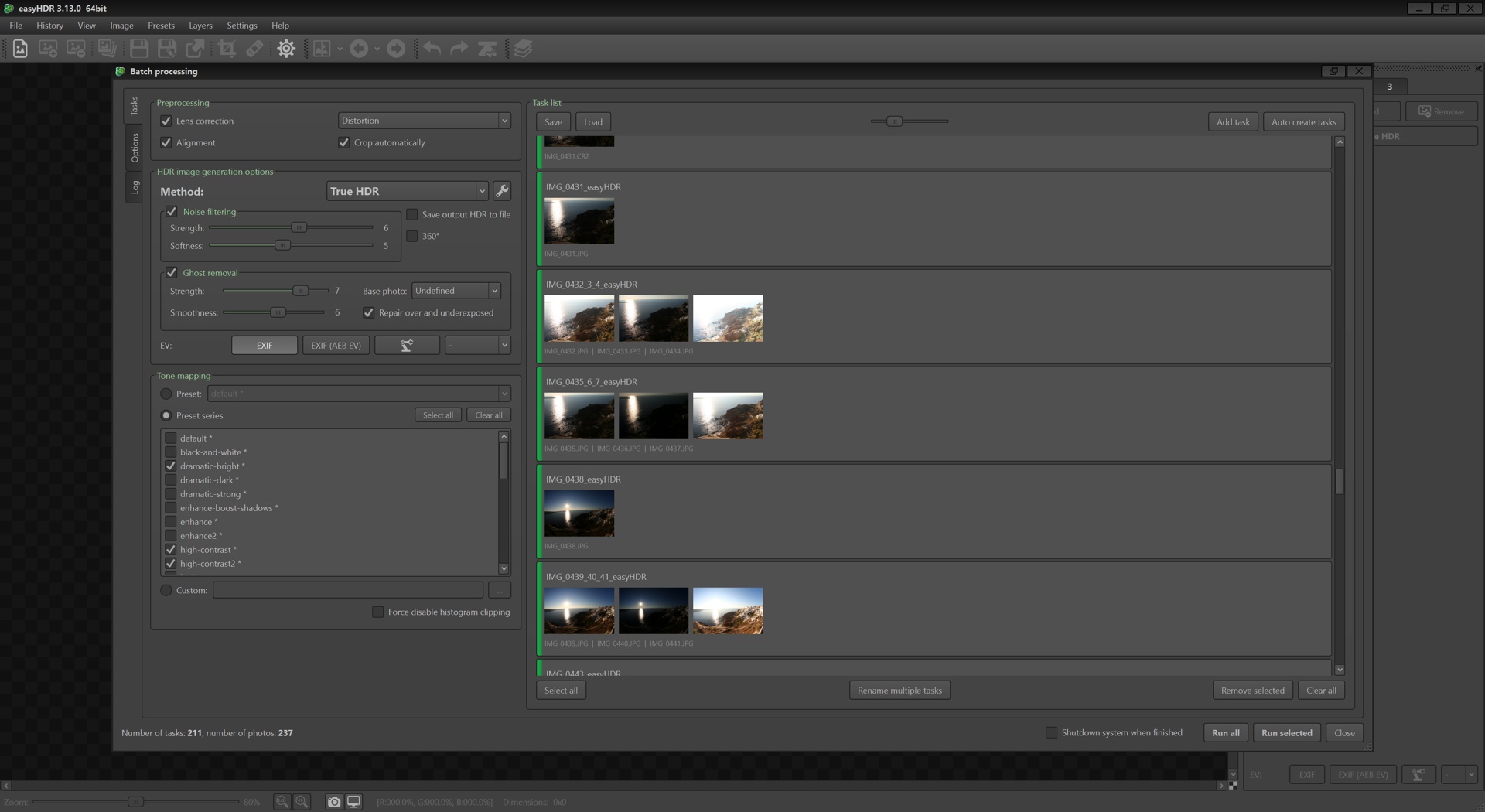
However, capturing the appropriate regions from individual input images is not easy but critical in exposure fusion. Exposure fusion methods bypass the procedure of generating the HDR images and directly fuse the best (i.e., visually meaningful with details) regions. ĭifferent from another HDR technique called tone mapping, which requires larger bit depth of the image than a 24 bit depth per pixel, exposure fusion only requires several low dynamic range (LDR) images and can directly produce an LDR image which visually imitates the HDR scene with high quality.

For example, smart sensors with HDR techniques enable high visual ability in environmental sensing, which can be used in intelligent traffic monitoring and vehicle-mounted sensors. Displaying natural scenes as perceived through the human visual system becomes a difficult task therefore, high dynamic range (HDR) techniques play a crucial role in vision-based intelligent systems. In this case, representing all details of natural scenes on displays is a challenge. In addition, most traditional display devices only support 24 bit RGB (red, green, and blue) color images. By contrast, if the exposure time is short, the details in the dark region are lost because of under-exposure. However, the content in the highlight region is lost because of over-saturation (over-exposure). If the exposure time is long, a detailed scene in a dark region can be captured. However, common cameras can capture a small portion of the dynamic range. The experimental results demonstrated that our work outperformed the state-of-the-art methods not only in several objective quality measures but also in a user study analysis.Īll surroundings have a large dynamic range-the luminance of the highlight region might be over one hundred thousand times larger than that of the dark region. Meanwhile, the details in the highlighted and dark regions were preserved simultaneously. The proposed fuzzy-based MNCRF (Multivariate Normal Conditional Random Fields) fusion method provided a smoother blending result and a more natural look. Moreover, a multiscale enhanced fusion scheme is proposed to blend input images when maintaining the details in each scale-level. In the fine-tuning stage, the multivariate normal conditional random field model is used to adjust the fuzzy-based initial weights which allows us to consider both intra- and inter-image information in the data.

In the coarse-tuning stage, fuzzy logic is used to efficiently decide the initial weights. To address this problem, we present an adaptive coarse-to-fine searching approach to find the optimal fusion weights.


Easyhdr 3 review manual#
When blending, the problem of local color inconsistency is more challenging thus, it often requires manual tuning to avoid image artifacts. However, determining the appropriate fusion weights is difficult because each differently exposed image only contains a subset of the scene’s details. Exposure fusion is an essential HDR technique which fuses different exposures of the same scene into an HDR-like image. High dynamic range (HDR) has wide applications involving intelligent vision sensing which includes enhanced electronic imaging, smart surveillance, self-driving cars, intelligent medical diagnosis, etc.


 0 kommentar(er)
0 kommentar(er)
